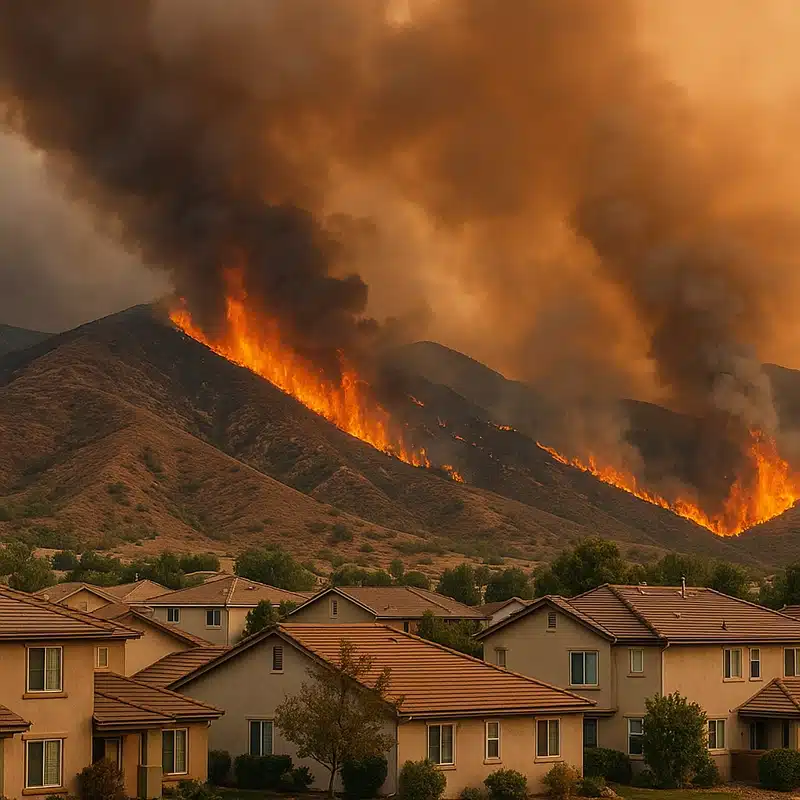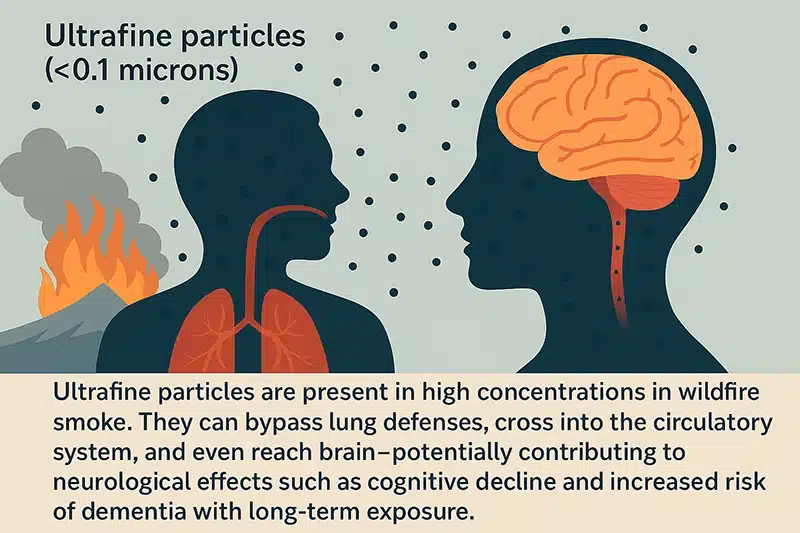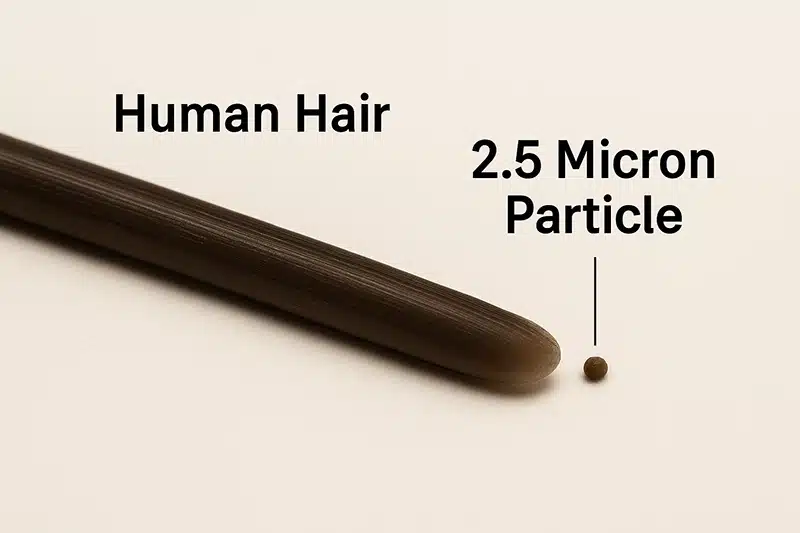
What you need to know:
Wildfire Smoke and Indoor Air Quality:
Wildfires are getting worse, and the air quality is taking a real hit. With hotter summers and longer dry spells, fires are popping up more often and burning bigger than ever. It’s not just the flames you need to worry about, though. The smoke from these wildfires is packed with tiny particles and harmful chemicals that can mess with your lungs, heart, and even your brain, no matter how far you are from the fire itself.
If you’re trying to keep your home, office, school, or clinic safe, clean indoor air isn’t just nice to have… it’s a must. That’s where FILTR revolution steps in. FILTR technology is making it easier for everyone to breathe easier during wildfire season, keeping harmful smoke out and fresh air in.
Whether you’re at work or relaxing at home, you deserve air that doesn’t make you worry about your health.

Wildfire smoke contains a hazardous combination of:
- PM2.5 (particulate matter less than 2.5 microns)
- Ultrafine particles (UFPs) under 0.1 microns
- Carbon monoxide, ozone, and volatile organic compounds (VOCs)
- Combustion byproducts from buildings, batteries, electronics, plastics, solar panels, and more
When wildfires sweep through urban areas, not just forests, they burn materials that release heavy metals, synthetic chemicals, dioxins, and corrosive gases. These are not just irritants… they’re toxic.

PM2.5 stands for “particulate matter 2.5 microns or smaller.” These particles are about 1/30th the width of a human hair and can stay suspended in air for long periods.
Ultrafine particles (UFPs) are even smaller—less than 0.1 microns—but are included within the PM2.5 category because of their size.

Take a look at this photo. To understand the nature of wildfire smoke, it’s important to realize that it’s made up of numerous different particles, each of which have their own size, and their own dangers to your health.
Rocks
(PM 2.5)
Small but heavy, contributing to most of the smoke’s mass
Sand
(UFPs)
Extremely light and numerous, dominating in particle count
UFPs are especially dangerous because they penetrate deep into the lungs, cross into the bloodstream, and can even reach the brain.
Health Risks from Wildfire Smoke
- Asthma and bronchitis flare-ups
- Heart attacks and strokes
- Increased hospital visits for respiratory and cardiovascular conditions
- Cognitive decline and heightened dementia risk with long-term exposure
Learn more at epa.gov
Vulnerable Populations Include:
- Children and infants
- Elderly individuals
- Pregnant women
- People with asthma, COPD, heart disease, or diabetes
How to Protect Yourself During Wildfire Events
When smoke fills the air, take these protective steps:
- Stay indoors with windows and doors closed
- Use a high-efficiency air purifier capable of capturing both PM2.5 and UFPs
- Avoid strenuous outdoor activity
- Wear a fit-tested N95 respirator when outdoors
- Monitor local Air Quality Index (AQI) and public health alerts

Real Protection. Not Just a Filter.
HEPA filtration isn’t enough when you’re dealing with wildfire smoke that includes ultrafine particles and chemical gases from burning buildings and plastics.
That’s why we built FILTR Revolution: a high-performance, hospital-grade air purification system that delivers unmatched protection during wildfire season and beyond.
- Captures 99.997% of particles at 0.3 microns
- Filters 99.97% of ultrafine particles down to 0.024 microns
- Proprietary carbon + potassium permanganate blend removes toxic gases and VOCs
- Whisper-quiet 24/7 operation… built for mission-critical environments
- Portable and ductable for sealed or negative-pressure spaces
- Ideal for homes, clinics, offices, classrooms, and emergency shelters
Protect Your Air. Protect Your Health.
Wildfire smoke is more than a nuisance … it’s a public health threat.
Be prepared. Breathe safer with FILTR Revolution.

